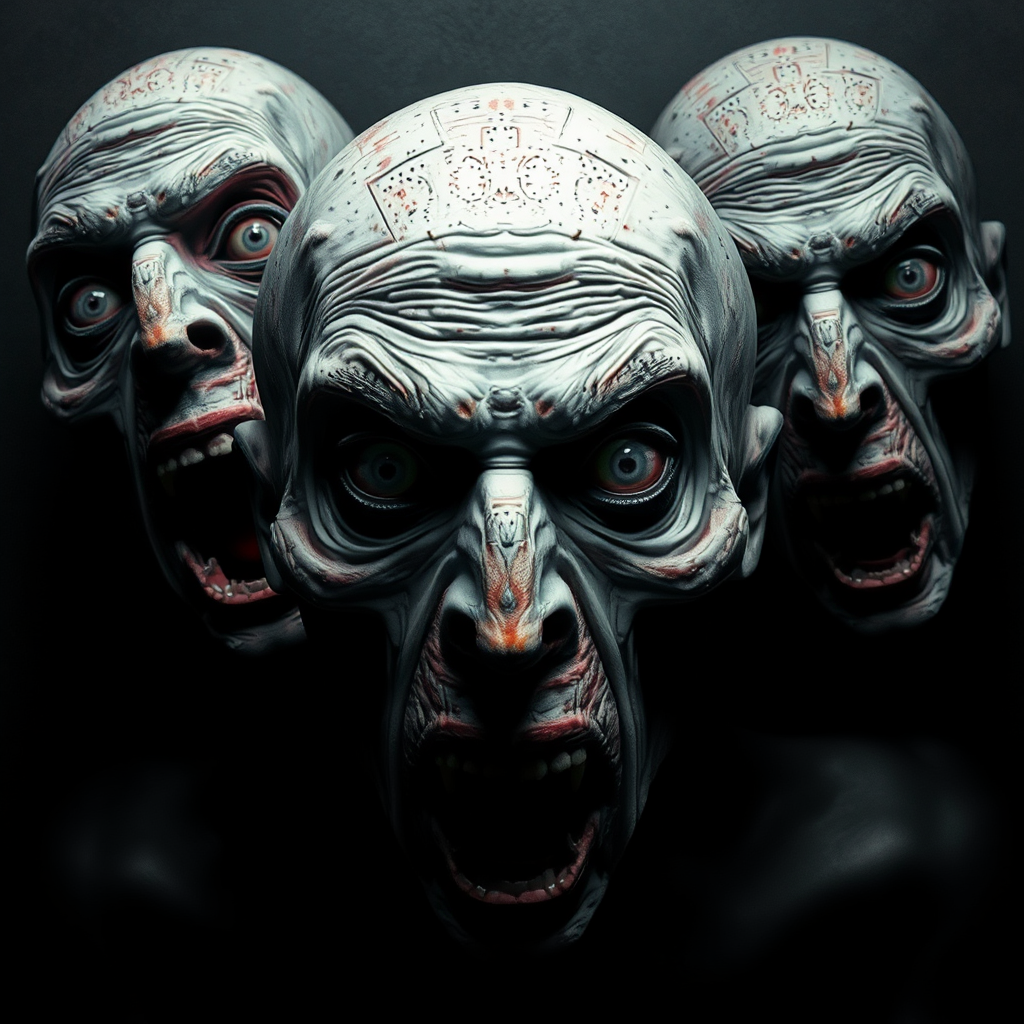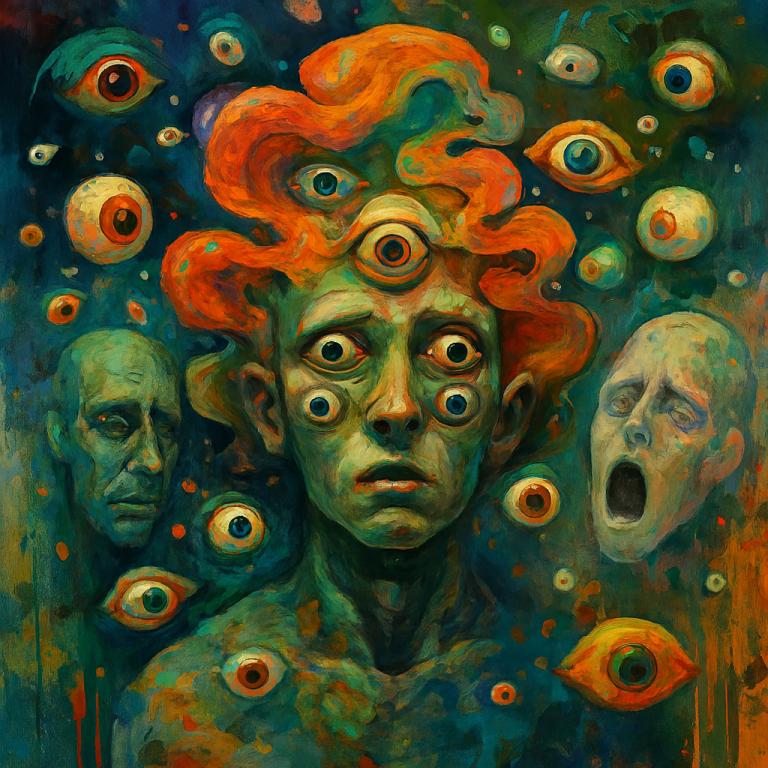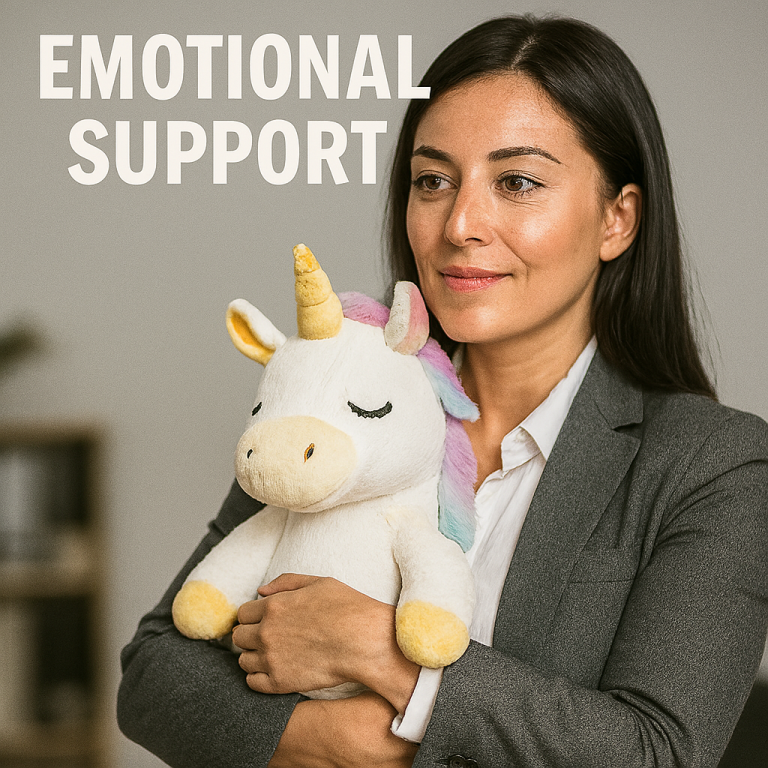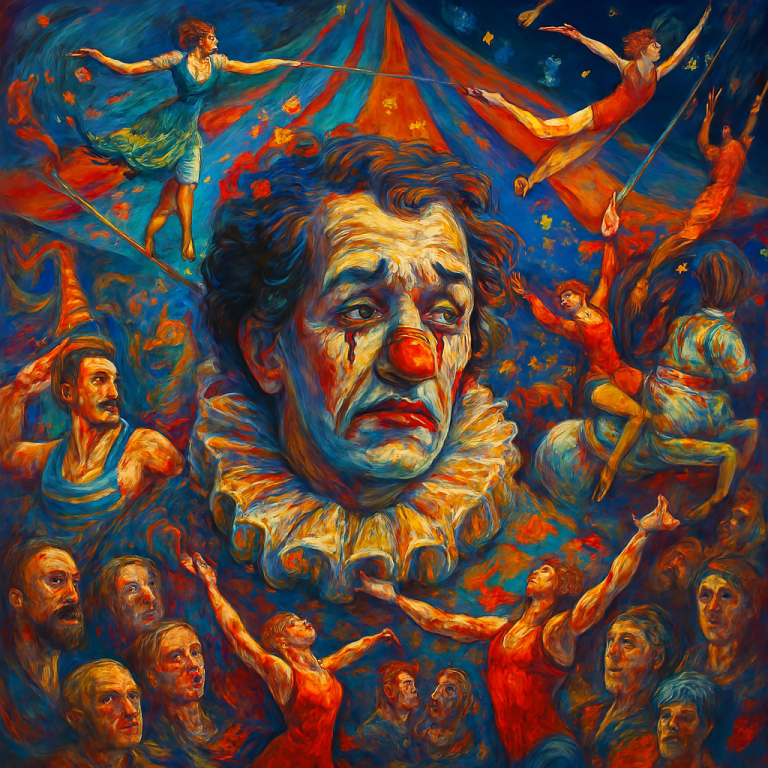
Hiding Facial Expressions
WHAT WE SHOW VS WHAT WE THINK
INTRODUCTION – THE MASK OF EXPRESSION
Facial expressions are often treated as windows into the soul. But in reality, they are more like masks—social tools shaped by context, culture, and survival. The human face evolved to communicate emotion quickly and efficiently. However, what the face shows is not always what the mind believes. This disconnect is central to social psychology, cognitive neuroscience, and behavioral science. People smile when they are anxious, frown when they are focused, and remain neutral when they are enraged. The face is a performance space, not a mirror. It reflects what is safe to show, not always what is true. Internal thoughts are shaped by memory, belief, and intention. Facial expressions are shaped by audience, habit, and social norms.
SMILING UNDER STRESS – WHEN JOY IS A DEFENSE
Smiling is often interpreted as a sign of happiness. But many people smile when they are nervous, overwhelmed, or afraid. This is known as a non-Duchenne smile—an expression that lacks genuine emotional origin. It is a social reflex, not a signal of joy. The brain uses smiling to defuse tension and mask vulnerability. In high-stress situations, smiling can prevent escalation or signal submission. It is common in customer service, conflict avoidance, and trauma response. Internally, the person may feel anxious, resentful, or exhausted.
But the face shows warmth and openness. This mismatch can confuse observers and isolate the person smiling. They may feel unseen or misread. Chronic smiling under stress can lead to emotional fatigue. It reinforces the idea that feelings must be hidden to be accepted. Understanding this pattern helps decode social behavior. And decoding behavior helps build empathy.
Table – Smiling Under Stress
| Facial Expression | Internal Thought | Psychological Function |
|---|---|---|
| Polite Smile | “I need to stay calm” | De-escalation |
| Nervous Grin | “I hope this ends soon” | Social buffering |
| Forced Cheerfulness | “I’m falling apart” | Masking distress |
| Tight-Lipped Smile | “I don’t feel safe” | Emotional containment |
| Overcompensating Smile | “I’m trying too hard” | Approval seeking |
FURROWED BROWS IN FOCUS – WHEN ANGER IS ACTUALLY CONCENTRATION
A furrowed brow is often read as anger or disapproval. But it can also signal deep concentration or cognitive load. When people are solving problems, recalling information, or navigating complexity, their facial muscles tense. This is a physiological response to mental effort. The brain recruits facial tension as part of focus. Observers may misinterpret this as irritation or judgment. Internally, the person may feel curious, analytical, or neutral.
The mismatch can lead to social friction. People may avoid someone who appears angry when they are simply thinking. This is especially common in classrooms, meetings, and interviews. Facial tension is not always emotional—it can be cognitive. Recognizing this helps prevent miscommunication. It also reduces unnecessary conflict. The face is not always a mood ring. Sometimes it’s just a thinking tool.
Table – Furrowed Brows in Focus
| Facial Expression | Internal Thought | Psychological Function |
|---|---|---|
| Brow Furrow | “I’m trying to understand this” | Cognitive effort |
| Squinting | “This is complex” | Visual or mental focus |
| Jaw Clench | “I need to concentrate” | Mental discipline |
| Lip Press | “I’m working through it” | Internal processing |
| Eye Narrowing | “I’m analyzing this” | Detail orientation |
LAUGHTER DURING GRIEF – WHEN HUMOR IS A SHIELD
Laughter is typically associated with joy. But it also appears in moments of grief, shock, or trauma. This is known as incongruent affect. The brain uses laughter to regulate overwhelming emotion. It creates distance from pain and restores a sense of control. People may laugh at funerals, during bad news, or after accidents. Internally, they may feel devastated, numb, or confused. The laughter is not joy—it’s survival. Observers may misread this as callousness or detachment. But it is often a sign of emotional overload. Laughter can be a pressure valve. It releases tension that words cannot. Understanding this helps normalize complex grief responses. It also prevents judgment. Because grief is not linear—and neither is expression.
Table – Laughter During Grief
| Facial Expression | Internal Thought | Psychological Function |
|---|---|---|
| Sudden Laughter | “I can’t believe this happened” | Emotional regulation |
| Nervous Chuckle | “This is too much” | Coping mechanism |
| Inappropriate Giggle | “I don’t know what to say” | Social confusion |
| Forced Humor | “I need to lighten this” | Group tension relief |
| Smiling Through Tears | “I’m breaking inside” | Dual emotional processing |
NEUTRAL FACES IN CONFLICT – WHEN CALM IS CONTROL
A neutral face in conflict can be read as indifference. But it often signals emotional regulation. People suppress expression to maintain control. This is especially common in high-stakes or power-imbalanced situations. Internally, the person may feel anger, fear, or sadness. But the face remains still. This is a learned survival strategy. It prevents escalation and protects vulnerability. Observers may interpret it as coldness or apathy. But it is often the opposite—intense emotion held in check. Neutrality is not emptiness. It is effort. Recognizing this helps decode power dynamics. It also honors the labor of emotional restraint. Because silence is not always absence. Sometimes it’s armor.
Table – Neutral Faces in Conflict
| Facial Expression | Internal Thought | Psychological Function |
|---|---|---|
| Blank Stare | “I can’t show how I feel” | Emotional shielding |
| Still Mouth | “I need to stay composed” | Conflict de-escalation |
| Unmoving Eyes | “I’m holding it together” | Self-regulation |
| Flat Affect | “I’m overwhelmed” | Emotional containment |
| Controlled Breathing | “I won’t let this break me” | Psychological endurance |
SMIRKING IN DISCOMFORT – WHEN CONTROL IS A PERFORMANCE
A smirk is often interpreted as arrogance or amusement. But it can also mask discomfort, insecurity, or emotional withdrawal. People smirk when they feel exposed but want to appear unaffected. The asymmetry of the expression reflects ambivalence—part defense, part deflection. Internally, the person may feel anxious, ashamed, or cornered. The smirk becomes a shield against vulnerability. It signals control, even when none exists.
In social situations, smirking can prevent deeper engagement. It creates distance and ambiguity. Observers may misread it as mockery or superiority. But it often reflects internal conflict. The person may be suppressing tears, rage, or fear. Smirking is not always smug—it can be survival. Recognizing this helps decode emotional complexity. And decoding complexity builds compassion.
Table – Smirking in Discomfort
| Facial Expression | Internal Thought | Psychological Function |
|---|---|---|
| Asymmetric Smile | “I’m not okay, but I won’t show it” | Emotional masking |
| Lip Curl | “I feel exposed” | Defensive posture |
| Raised Eyebrow | “I’m trying to stay in control” | Social ambiguity |
| Tight Cheeks | “I’m holding back emotion” | Containment |
| Quick Smirk | “I need to deflect this” | Avoidance |
WIDE EYES IN SHOCK – WHEN THE MIND FREEZES
Wide eyes are a classic signal of surprise or fear. But they also appear when the brain enters freeze mode. In moments of trauma or overload, the nervous system halts movement and expression. The eyes widen as sensory input spikes. Internally, the person may feel numb, disoriented, or detached. The wide-eyed look is not always alert—it can be dissociative. Observers may interpret it as curiosity or alarm. But it often reflects cognitive shutdown. The person may be unable to speak, react, or process. Wide eyes can signal hypervigilance or helplessness. Context matters—what looks like attention may be trauma. Understanding this helps prevent misjudgment. Because the face in shock is not always readable. And unreadable faces deserve care.
Table – Wide Eyes in Shock
| Facial Expression | Internal Thought | Psychological Function |
|---|---|---|
| Staring Eyes | “I can’t process this” | Freeze response |
| Unblinking Gaze | “I’m overwhelmed” | Sensory overload |
| Dilated Pupils | “I’m in danger” | Threat detection |
| Tense Forehead | “I don’t know what to do” | Cognitive paralysis |
| Frozen Expression | “I’m not here” | Dissociation |

RAISED EYEBROWS IN POLITENESS – WHEN SURPRISE IS MANUFACTURED
Raised eyebrows often signal surprise or interest. But they are also used to perform politeness. In social settings, people raise their brows to appear engaged or agreeable. Internally, they may feel bored, skeptical, or disconnected. The gesture becomes a social lubricant. It smooths over awkwardness and signals attentiveness. This is common in customer service, interviews, and diplomacy. The expression is exaggerated to meet expectations. Observers may interpret it as genuine curiosity. But it often reflects obligation, not emotion. Raised eyebrows can be part of a scripted interaction. They help maintain harmony, even when the mind resists. Recognizing this helps decode social performance. Because not all engagement is authentic. And authenticity is not always safe.
Table – Raised Eyebrows in Politeness
| Facial Expression | Internal Thought | Psychological Function |
|---|---|---|
| Lifted Brows | “I’m supposed to look interested” | Social compliance |
| Open Eyes | “I’m trying to be polite” | Engagement signaling |
| Slight Smile | “I don’t actually care” | Masking disinterest |
| Nodding | “Let’s move this along” | Conversation management |
| Tilted Head | “I’m performing attentiveness” | Social lubrication |
PUZZLED LOOKS IN AGREEMENT – WHEN CONFUSION IS HIDDEN
People often nod and smile while feeling confused. This is a form of social masking. The puzzled look may flash briefly before being replaced by agreement. Internally, the person may feel lost, overwhelmed, or embarrassed. But they choose to hide it to avoid conflict or judgment. This is common in classrooms, meetings, and group discussions. The face performs understanding while the mind struggles. Observers may assume comprehension and move on. But the person remains mentally stuck. This mismatch creates learning gaps and emotional strain. It also reinforces silence over inquiry. Recognizing this helps foster safer communication. Because confusion is not weakness—it’s a signal. And signals deserve response.
Table – Puzzled Looks in Agreement
| Facial Expression | Internal Thought | Psychological Function |
|---|---|---|
| Brief Furrow | “I don’t get this” | Cognitive dissonance |
| Quick Nod | “I’ll pretend I do” | Social conformity |
| Tight Smile | “I don’t want to ask” | Avoidance |
| Eye Darting | “I’m trying to catch up” | Mental scrambling |
| Still Face | “I’m hiding my confusion” | Emotional protection |
TEARS WITHOUT SOUND – WHEN PAIN IS PRIVATE
Silent tears are often misunderstood. They may signal deep sorrow, suppressed rage, or existential grief. The absence of sound does not mean absence of emotion. Internally, the person may feel shattered, but unwilling to speak. Silent crying is a form of emotional containment. It protects dignity, privacy, or safety. Observers may miss the intensity or misread it as mild sadness. But silent tears often reflect profound pain. This is common in trauma survivors, caregivers, and emotionally restrained cultures. The face shows moisture, but not movement. The body remains still, the voice absent. Recognizing silent tears requires emotional literacy. Because pain is not always loud. And loudness is not the measure of suffering.
Table – Tears Without Sound
| Facial Expression | Internal Thought | Psychological Function |
|---|---|---|
| Wet Eyes | “I’m hurting deeply” | Emotional release |
| Still Mouth | “I can’t speak this” | Containment |
| No Sob | “I need to stay composed” | Self-protection |
| Downturned Gaze | “I’m not ready to be seen” | Privacy |
| Shallow Breathing | “I’m surviving this moment” | Regulation |
SMILING IN REJECTION – WHEN LOSS IS DIGNIFIED
People often smile when they are rejected. This is a form of emotional dignity. Internally, they may feel hurt, disappointed, or ashamed. But they choose to respond with grace. The smile becomes a boundary—protecting self-worth from external judgment. It signals resilience, not joy. Observers may misread it as indifference or detachment. But it often reflects emotional discipline. Smiling in rejection is common in auditions, breakups, and professional setbacks. It helps preserve identity and social standing. The person may feel crushed but refuses to collapse. This is not denial—it’s containment. Recognizing this helps honor emotional labor. Because dignity is not the absence of pain. It’s the choice to carry it with strength.
Table – Smiling in Rejection
| Facial Expression | Internal Thought | Psychological Function |
|---|---|---|
| Polite Smile | “I won’t let this break me” | Emotional dignity |
| Nodding | “I accept this” | Boundary setting |
| Still Eyes | “I’m holding back tears” | Containment |
| Controlled Breathing | “I need to stay calm” | Regulation |
| Quick Exit | “I need space to feel this” | Emotional safety |
FLAT FACES IN JOY – WHEN EXCITEMENT IS INTERNAL
Some people experience joy without showing it. Their faces remain flat, still, or neutral. Internally, they may feel thrilled, proud, or deeply moved. But their expression does not reflect it. This is common in neurodivergent individuals, emotionally restrained cultures, or trauma survivors. The disconnect is not apathy—it’s wiring. The brain may process emotion differently or suppress expression for safety. Observers may misread this as disinterest or coldness. But the person may be glowing inside. Flat affect in joy is not a flaw—it’s a variation. Recognizing this helps prevent misjudgment. It also expands our understanding of emotional diversity. Because joy is not always visible. And visibility is not the measure of feeling.
Table – Flat Faces in Joy
| Facial Expression | Internal Thought | Psychological Function |
|---|---|---|
| Still Mouth | “I’m really happy” | Internal celebration |
| Neutral Eyes | “This means a lot to me” | Emotional |
EMOTIONAL SUPPRESSION – WHEN THE FACE REFUSES TO FEEL
Some people train their faces to show nothing. This is not apathy—it’s suppression. Emotional suppression is a learned response to trauma, judgment, or power imbalance. The face becomes a blank canvas, stripped of cues. Internally, the person may feel intense emotion—rage, grief, joy—but refuses to express it. This is common in high-control environments, military training, or emotionally abusive households.
Suppression protects the self from vulnerability. It also prevents others from reading or exploiting emotion. But long-term suppression leads to emotional fatigue, identity confusion, and relational distance. The person may struggle to connect, trust, or feel safe. Observers often misread suppression as coldness or indifference. But it is often a sign of survival. The face is not broken—it’s armored. Recognizing suppression requires emotional literacy. Because silence is not emptiness. And emptiness is often full.
Table – Emotional Suppression in Facial Behavior
| Facial Expression | Internal Thought | Psychological Function |
|---|---|---|
| Blank Face | “I won’t let them see me” | Emotional shielding |
| Still Eyes | “I’m feeling too much” | Containment |
| No Movement | “I’m protecting myself” | Survival strategy |
| Controlled Breathing | “I need to stay invisible” | Regulation |
| Tight Jaw | “I’m holding everything in” | Suppression |
CULTURAL CONDITIONING – WHEN THE FACE Follows Rules
Facial expression is shaped by culture. Different societies teach different emotional norms. In some cultures, smiling is expected in all public interactions. In others, stoicism is a sign of respect. These rules shape how people use their faces. Internally, the emotion may be universal—joy, grief, anger—but the expression is filtered. Cultural conditioning teaches what is acceptable, admirable, or shameful. This affects how people perform identity, navigate conflict, and build relationships. Observers from different cultures may misread expressions.
A neutral face may be seen as rude; a smile may be seen as insincere. Cultural conditioning is not deception—it’s adaptation. It helps people survive and belong. But it can also create emotional dissonance. The person may feel one thing and show another. Understanding cultural norms prevents misjudgment. Because the face is not just personal—it’s social. And social rules shape expression.
Table – Cultural Conditioning in Facial Expression
| Cultural Norm | Expected Expression | Internal Emotion |
|---|---|---|
| East Asian Stoicism | Neutral face in public | Pride, grief, joy |
| Western Friendliness | Frequent smiling | Boredom, anxiety, politeness |
| Middle Eastern Respect | Downturned gaze | Reverence, attentiveness |
| Nordic Reserve | Minimal expression | Thoughtfulness, warmth |
| Latin Expressiveness | Animated face | Passion, sincerity |
FACIAL FATIGUE – WHEN THE MUSCLES Give Up
Facial fatigue occurs when emotional labor exceeds capacity. The muscles stop performing, the expressions flatten, and the person disengages. Internally, they may feel exhausted, numb, or emotionally depleted. This is common in caregiving roles, service industries, and chronic stress environments. The face becomes too tired to perform. Smiles fade, brows relax, and eyes lose focus. Observers may interpret this as laziness or detachment. But it often reflects burnout. Facial fatigue is a physiological signal of emotional overload. It shows that the person has been performing too long. Recovery requires rest, safety, and emotional permission. The face needs time to reset. Recognizing fatigue prevents judgment. Because performance is not infinite. And even masks need to breathe.
Table – Facial Fatigue Indicators
| Facial Expression | Internal Thought | Psychological Function |
|---|---|---|
| Drooping Eyes | “I’m too tired to care” | Emotional exhaustion |
| Flat Mouth | “I’ve been smiling all day” | Burnout |
| No Reaction | “I’m done performing” | Disengagement |
| Slow Blinking | “I need rest” | Recovery signal |
| Slumped Brows | “I can’t hold this anymore” | Collapse |
SYMBOLIC CONTRADICTION – WHEN THE FACE Lies for Survival
Sometimes the face must lie. This is not manipulation—it’s protection. People show joy when they feel grief, calm when they feel rage, and interest when they feel disgust. These contradictions are strategic. They help people navigate unsafe environments, power dynamics, or social expectations. Internally, the person may feel trapped, conflicted, or ashamed. But the face performs safety. This is common in diplomacy, performance art, and trauma response. The contradiction is not hypocrisy—it’s survival. Observers may feel confused or betrayed.
But the person is often protecting themselves or others. Symbolic contradiction is a form of emotional labor. It requires precision, discipline, and sacrifice. Recognizing it helps decode complexity. Because contradiction is not failure—it’s adaptation. And adaptation is often invisible.
Table – Symbolic Contradiction in Facial Expression
| Facial Expression | Internal Thought | Psychological Function |
|---|---|---|
| Smiling in Grief | “I need to protect them” | Emotional shielding |
| Laughing in Rage | “I can’t afford to explode” | Social containment |
| Nodding in Disgust | “I must stay polite” | Power navigation |
| Calm Face in Panic | “I need to look composed” | Survival strategy |
| Cheerful Eyes in Sadness | “I’m trying to hold it together” | Emotional masking |

VISIBILITY VS PRIVACY – WHEN THE FACE Is a Gatekeeper
The face is a gatekeeper between the self and the world. It decides what enters and what exits. Visibility means openness, vulnerability, and connection. Privacy means containment, protection, and control. People use their faces to manage this boundary. Internally, they may crave intimacy but fear exposure. Or they may feel safe but choose invisibility. The face becomes a negotiation tool. It signals availability, distance, or ambiguity. Observers interpret visibility as honesty and privacy as secrecy. But both are valid emotional strategies.
The person may be protecting trauma, identity, or sacred emotion. Visibility is not always brave; privacy is not always weak. Recognizing this helps honor emotional boundaries. Because the face is not just expression—it’s architecture. And architecture defines access.
Table – Visibility vs Privacy in Facial Expression
| Facial Expression | Internal Thought | Psychological Function |
|---|---|---|
| Open Smile | “I want to connect” | Emotional availability |
| Neutral Gaze | “I need space” | Boundary setting |
| Downturned Eyes | “I’m not ready to share” | Privacy |
| Expressive Brows | “I feel safe here” | Visibility |
| Still Mouth | “This is mine to hold” | Emotional protection |
CONCLUSION – THE FACE IS NOT THE MIND
Facial expression is not a transcript of thought. It is a layered, adaptive, symbolic surface—shaped by culture, emotion, survival, and social expectation. What the face shows is often a performance, a negotiation, or a shield. Internally, the mind may be processing grief, rage, confusion, or joy—none of which appear on the surface. This disconnect is not deception—it is complexity. It reflects the tension between visibility and privacy, between social safety and emotional truth. Understanding this gap is essential to emotional literacy, trauma-informed care, and symbolic storytelling. The face is not broken when it contradicts the mind—it is doing its job.
It protects, performs, and preserves. But when we mistake expression for essence, we misread each other. We shame silence, punish ambiguity, and overlook pain. This post is not a call to expose emotion—it is a call to honor it. To recognize that stillness may hold storms, and smiles may carry sorrow. The face is not the mind. And the mind deserves to be seen.
JOIN THE DISCUSSION
Have you ever smiled through pain or nodded through confusion? What expressions do you perform to survive, belong, or protect? Which moments taught you that your face was not safe to be honest? How do you navigate the tension between what you feel and what you show? Let’s talk about the symbolic labor of expression—the masks we wear, the truths we hold, and the systems that shape both. Your experience matters. Your silence matters. And your contradictions are not flaws—they’re signals. Share your stories, your questions, or your rituals. The conversation is open.
HASHTAGS
#FacialPsychology #EmotionalLiteracy #SymbolicExpression #TraumaInformed #SocialMasking #FaceVsMind #EmotionalComplexity #BehavioralScience #NonverbalCommunication #EditorialPsychology






1 thought on “Hiding Facial Expressions And The Strange Mind Powerful Understanding”